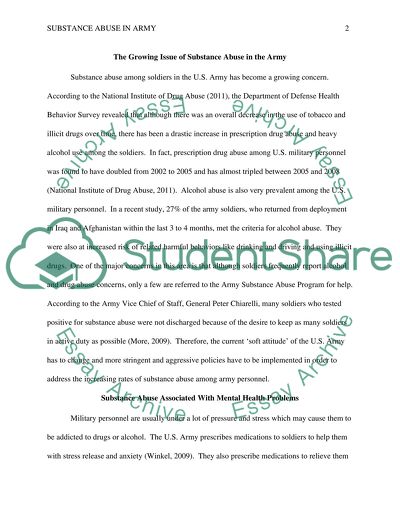Cite this document
(“The Growing Issue of Substance Abuse in the Army Research Paper”, n.d.)
Retrieved from https://studentshare.org/sociology/1435453-soc
Retrieved from https://studentshare.org/sociology/1435453-soc
(The Growing Issue of Substance Abuse in the Army Research Paper)
https://studentshare.org/sociology/1435453-soc.
https://studentshare.org/sociology/1435453-soc.
“The Growing Issue of Substance Abuse in the Army Research Paper”, n.d. https://studentshare.org/sociology/1435453-soc.


